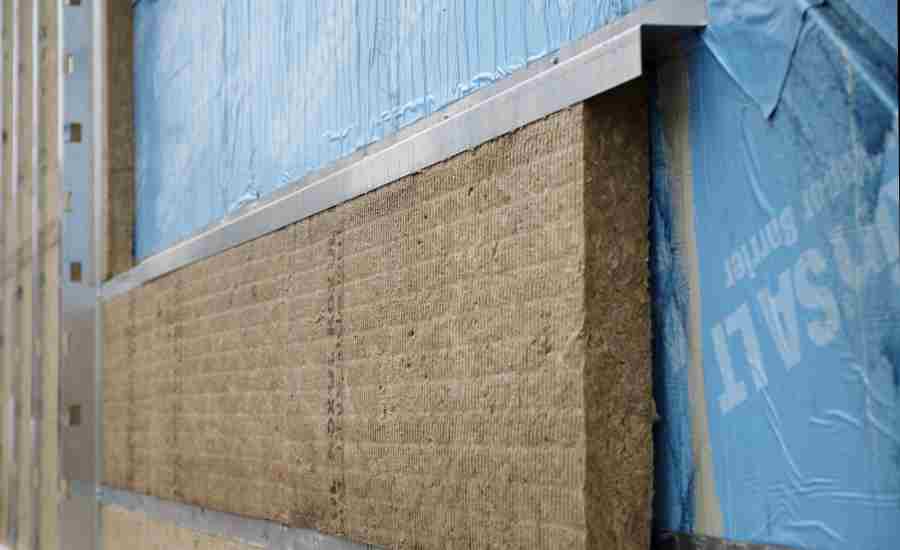Increased Energy Performance Amid Stricter Building Codes
Adapting to Change








It has been a long known fact that buildings consume a large amount of energy and resources. In the past, the solution has been to introduce new technologies, i.e. active systems, as an attempt to combat this major issue. Technologies such as solar panels, heat exchange systems, and low energy appliances have tried to bridge the energy gap. However, people have realized that active systems are not enough to combat this crisis; and building owners are asking for increased energy efficiency, improved indoor environment quality and prolonged durability in their buildings. In order to make an impact on the energy consumption of buildings, we have now learned, again, that we have to stick with the fundamentals of building science and look to passive systems to meet the necessary changes.
Designing the building envelope to reduce the transfer of heat and air is critical in order to increase the energy efficiency of buildings. Strategies include high R-value walls, exterior insulation, reduced thermal bridging and increased air tightness. There are programs and standards in place such as net-zero ready and Passive House where these strategies sit at the core for design, but that has not translated to the masses yet.
What Are The Codes Saying?
With the rising concerns for energy consumption and societal urge for energy conservation, the building and construction industry as a whole is doing its part to catch up. Building codes and energy codes are calling for change in the way we design and build our building enclosures. As it relates to the thermal performance, codes and standards have been incorporating both prescriptive and performance based methods for compliance; where prescriptive methods indicate minimum R-value (thermal resistance) and maximum U-value (thermal transmittance) requirements while the performance methods require whole building energy analysis.
The model standard that is adopted for prescriptive based codes is ASHRAE 90.1—Energy Standard for Building except Low-Rise Residential Buildings (current version 2016). The prescriptive R-value requirement refers to the nominal R-value of the insulation materials only. This is the typically followed method as it does not require additional calculations or considerations for the other layers in the assembly. The maximum overall U-value requirements refers to the performance of the assembly as a whole and takes into account all the layers and materials. This method requires additional calculations as reductions to the nominal R-value of the insulating materials are assessed, depending on the structural components within the assembly.
Most recently, energy codes and standards are increasing their prescriptive building envelope thermal requirements and making it more difficult to design and build energy inefficient assemblies. Prescriptive R-value requirements are calling for exterior continuous insulation in most climate zones for above grade walls and roofs, insulation requirements for below grade and under slab are increasing, and lower maximum U-values are being prescribed for fenestration. Additionally, many codes and standards are also looking to start prescribing effective R-value requirements in lieu of the nominal R-value requirements which takes into account thermal bridging caused by the structure of the envelope assembly (similar to the U-value method). Along with the thermal requirements, air tightness requirements are also becoming more stringent.
Adapting to Change
With more stringent energy codes come challenges that the industry will have to overcome. On the design side, the new prescriptions call for advanced building envelope thermal calculations, more attention to connection and penetration details, and an overall need to work as a holistic design team to ensure both the building envelope system and mechanical systems work as a whole to achieve true energy efficiency of the building.
To calculate the effective R-value of an assembly, there are multiple resources that simplify the process. The ASHRAE Handbook: Fundamentals provides step-by-step calculations, while ASHRAE 90.1 provide tables and chart with pre-determined values for typical assemblies. These tables however only take into account reductions caused by the framing (steel or wood) but does not account for reductions in the exterior continuous insulation caused by the fastening method.
Different insulation types will have different fastening requirements. Most commonly, they are fastened using long fasteners/screws, or can be adhered to the substrate. Although fasteners will have an impact on performance, the effects are minimal and can be considered negligible. Other typical fastening methods that do have a significant effect on the thermal performance include brick ties and metal z-girt systems. These systems can have reductions between 15-60 percent depending on the spacing and material (i.e. some metals are more conductive than others). These values have been validated from multiple building enclosure consultants with published guides such as the Thermal Envelope Thermal Bridging Guide from Morrison Hershfield, and Thermal Bridging from Cladding Attachment Strategies through Exterior Insulation from RDH.
To compensate for the high thermal bridges caused by typical girt systems, when using thick insulation levels, designers can also consider advanced systems including fiberglass clips, metal clip or metal clips with thermal breaks and many others. Due to the uniqueness of these systems, in order to adequately calculate the thermal reductions, thermal modelling (either 2D or 3D) is required. Modeling is also critical when considering the thermal bridging that occurs at the wall-to-floor, wall-to-roof and other connections such as openings (windows and doors), metal flashing (if applicable), floor slabs or balconies.
It is important to note that similar thermal reductions are going to occur independent of the type of insulation and its nominal R-value. The final overall effective performance may differ, but the amount of reduction always will be at par because the thermal bridge material will always will be the driving factor.
Implementing Code Requirements with Envelope Design
When it comes to the design of the building envelope, codes and standards mainly address the thermal requirements from an energy perspective. There is however little guidance on the building envelope requirements that address moisture and durability concerns. The optimal building envelope design solution is to place all the insulation on the exterior, i.e. continuous insulation, along with all of the control layers (air, weather, water resistive barriers). There are several benefits with using continuous insulation, which include increasing the durability of the assembly, reducing the risk of condensation, reducing thermal bridging, and increasing overall performance.
Depending on the building type, wood frame, steel frame, mass or metal building, different types of building envelope assemblies will have different critical layers. For example, in a typical steel frame wall assembly, the exterior sheathing is the critical layer within the wall assembly. This is so because it is the first “cold” surface within the wall assembly, which translates to being the plane for potential condensation to occur. The design strategy to prevent condensation at this plane is to use exterior insulation to keep the sheathing “warm,” and ideally, above the dew point temperature. The figure below demonstrates the difference in performance both with and without exterior insulation. When using R8 of continuous insulation, the temperature of the sheathing layer is higher than the assembly without continuous insulation, with less hours below the dew point temperature. In colder climates, this is a significant difference to reduce risk of condensation.
There are several different types of insulation that can be used as exterior insulation, such as mineral wool, extruded polystyrene (XPS), expanded polystyrene (EPS), sprayed polyurethane foam (closed-cell and open-cell) and others. Each of these insulation types has different performance characteristics and added benefits. The thickness of the exterior insulation that should be used will depend on code requirements, the thermal resistance value/inch of the insulation, the vapor permeability of the insulation, and the overall assembly structure and components.
The key to choosing the type of exterior insulation in the building envelope design is to ensure that the assembly will not increase potential for condensation and will not trap moisture. The permeance of all the different layers within an assembly will also dictate performance, therefore it is critical to conduct proper analysis of the different options.
What’s Missing?
Ultimately, codes and standards are adequately addressing thermal considerations for energy efficiency; and all in all, this is the simple portion of the building envelope design. Other key considerations for energy efficiency include air leakage and water penetration. Although some energy codes and standards are identifying maximum air leakage rates, there is little guidance on how to achieve these rates and little quality assurance occurring in the industry. Proper detailing of the air barrier system is critical to achieve required air leakage rates, but it is not a simple task to accomplish. Not to mention implementing these requirements with other key code requirements such as fire safety and sound transmission. Luckily, there are multiple resources outside of the energy codes where designers can turn to for guidance including manufacturers, consultants, guides and handbooks among others.
References
1. Building Envelope Thermal Bridging Guide: Analysis, Applications & Insight
Morrison Hershfield, https://www.bchydro.com/content/dam/BCHydro/customer-portal/documents/power-smart/builders-developers/final-mh-BC-part-0-introduction.pdf
2. Thermal Bridging from Cladding Attachment Strategies through Exterior Insulation
James Higgins, Colin Shane, and Graham Finch (2014), http://rdh.com/wp-content/uploads/2014/10/NAPHC-2014-Thermal-Bridging-Through-Exterior-Insulation-Higgins-Shane-Finch.pdf
3. ROXUL Effective R-value Calculator, http://www.roxul.com/products/commercial/effective+r-value+calculator
Looking for a reprint of this article?
From high-res PDFs to custom plaques, order your copy today!










